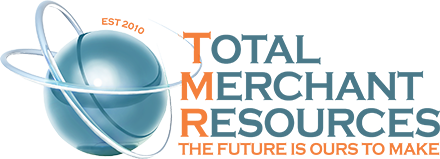
Leasing equipment can be a smart financial move for our business. It allows us to access the latest technology without a hefty upfront cost. This is especially useful for small businesses that must carefully manage cash flow. By spreading out payments, we can invest in essential equipment while keeping other funds available for different needs.
Access to upgraded equipment can give us a competitive edge. With leasing, we can regularly update our tools and machinery, ensuring we always work with the best available. This leads to increased efficiency and productivity, ultimately boosting our bottom line. Furthermore, leasing offers flexibility. When the lease term ends, we can choose to upgrade, keep, or return the equipment. These options let us adapt to our changing business needs.
Navigating the world of equipment leasing involves understanding the benefits, choosing the right equipment, and managing the lease terms effectively. By doing so, we can enhance our operations and set the stage for growth.
Understanding the Benefits of Equipment Leasing
Equipment leasing offers several benefits that can help our business grow without the heavy financial burden of buying new equipment outright. One major advantage is conserving capital. Leasing allows us to use our cash for other essential areas like marketing, hiring, or inventory instead of tying it all up in equipment purchases. This flexibility can be crucial for keeping our operations running smoothly and taking advantage of growth opportunities.
Another benefit is staying up-to-date with the latest technology. Leasing agreements often include options to upgrade our equipment at the end of the lease term. This way, we can ensure that we’re always using the most current and efficient tools without spending extra money on replacements. Also, leasing can offer tax advantages as lease payments can often be deducted as business expenses, reducing our taxable income.
Choosing the Right Equipment for Our Needs
Selecting the right equipment to lease is essential for meeting our business needs efficiently. We should start by assessing our operational requirements. What specific tasks or functions will the equipment perform? Understanding this helps us identify the required features and capabilities, ensuring that our chosen equipment will support our objectives without unnecessary extras.
Next, it’s wise to compare different models and brands to find the best match for our needs. Reviews, user feedback, and expert opinions can provide valuable insights into the reliability and performance of various options. It’s also important to consider the total cost of ownership, which includes maintenance, repairs, and operating costs. By thoroughly evaluating these factors, we can choose equipment that suits our needs and fits within our budget.
Strategies for Negotiating Lease Terms
Successful negotiation is key to securing favorable lease terms. First, we should research and understand the various lease options available to us. This includes knowing the difference between fair market value leases and $1 buyout leases. Fair market value leases generally come with lower monthly payments and give us flexibility at the end of the lease term, while $1 buyout leases allow us to purchase the equipment for a nominal amount at the end of the lease.
Another strategy is to negotiate the length of the lease term. A longer lease term usually means lower monthly payments, but we should be sure that the equipment will remain useful for the entire period. Discussing maintenance and service terms within the lease agreement is also beneficial. We may be able to negotiate for the leasing company to cover regular maintenance, which can save us money and ensure that the equipment stays in good working condition. Lastly, always read the fine print for any hidden fees or penalties for early termination and negotiate those terms if necessary.
Managing Our Equipment Lease Effectively
Managing an equipment lease effectively involves several important steps. First, we should keep detailed records of all lease documents, including the lease agreement, payment receipts, and maintenance records. This helps us stay organized and can be valuable if any disputes arise. Setting reminders for payment due dates ensures that we never miss a payment, avoiding late fees and potential damage to our credit score.
Regularly inspecting and maintaining the leased equipment is also crucial. Following the manufacturer’s maintenance schedule can prevent breakdowns and extend the equipment’s life. If the lease includes maintenance provisions, we should make sure that the leasing company is fulfilling their obligations. Additionally, it’s important to plan ahead for the end of the lease term. We should evaluate whether it’s best to return the equipment, extend the lease, or purchase the equipment. This decision should be based on the equipment’s condition, our future needs, and the financial terms offered by the lessor.
Conclusion
Leasing equipment offers multiple benefits, from conserving capital to staying current with the latest technology. By choosing the right equipment, negotiating favorable lease terms, and managing the lease effectively, we can maximize these benefits for our business. Each step requires careful consideration and planning, ensuring that the equipment we lease supports our growth and operational needs.
At Total Merchant Resources, we are committed to helping you navigate the complexities of equipment leasing. Our comprehensive services and expertise can guide you through every step, making the process seamless and efficient. Contact us today to learn more about how we can support your business in 2024 and beyond.



